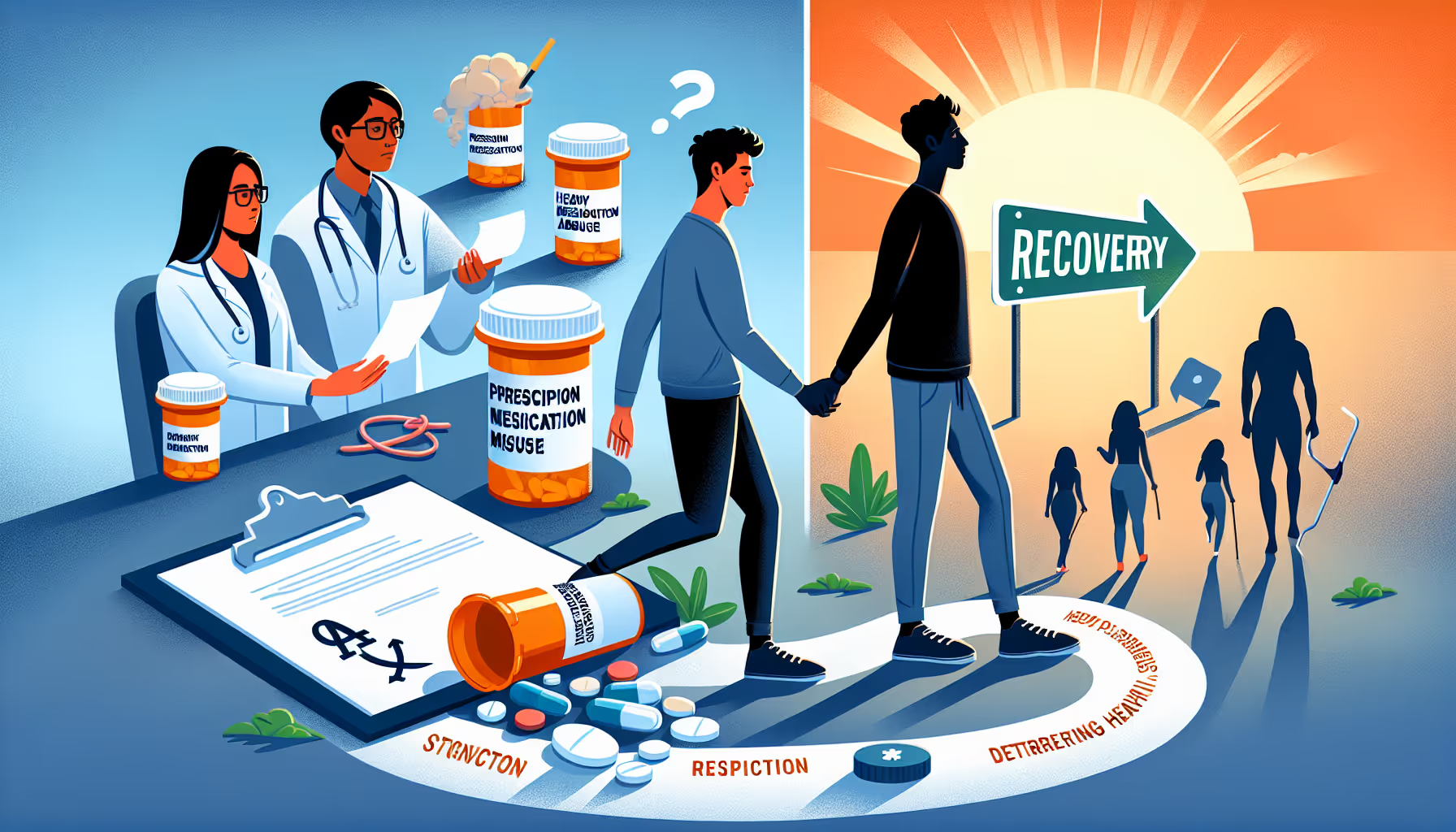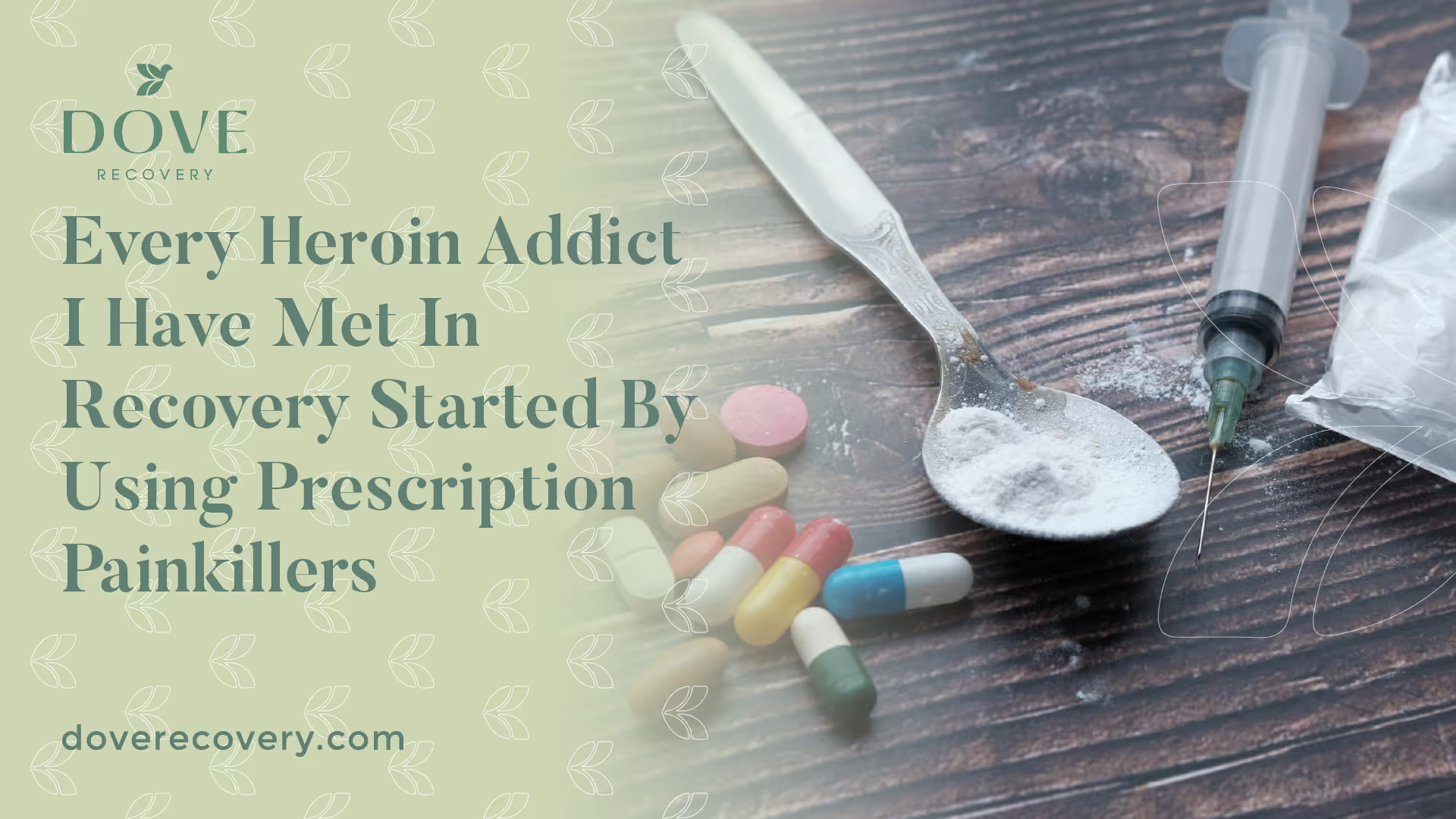Every Heroin Addict I Have Met In Recovery Started By Using Prescription Painkillers

The Start of Addiction
The journey into addiction often begins unnoticed, with prescription painkillers playing a significant role. The phrase 'every heroin addict I have met in recovery started by using prescription painkillers' isn't an exaggeration but a stark reality of the opioid crisis faced today.

Prescription Painkillers as Gateways
Prescription painkillers, specifically opioids, are often prescribed to manage severe and chronic pain. These drugs work by interacting with opioid receptors in the brain and body to block pain signals, providing relief to the user. However, along with their pain-relieving properties, opioids can also induce a sense of euphoria or a "high," making them highly addictive.
While these medications can be beneficial when used correctly under medical supervision, misuse can lead to a dangerous spiral into addiction. This misuse can take many forms, including taking higher doses than prescribed, using the medication recreationally, or continuing to use the drug even after the medical need has passed.
According to various studies, a significant number of people who misuse prescription painkillers transition to heroin. This is often due to the fact that heroin, an illegal opioid, can be cheaper and easier to obtain than prescription medications.
In many cases, individuals start by using prescription painkillers to manage legitimate pain. However, over time, they may develop a physical dependence on these drugs. As their tolerance increases, they may find themselves needing higher and higher doses to achieve the same effects. When they can no longer obtain or afford prescription painkillers, they may turn to heroin as a cheaper and more accessible alternative.
The path from prescription painkiller misuse to heroin addiction is a dangerous one, marked by increasing physical and psychological risks. It's a journey that underscores the critical importance of responsible prescribing practices, improved patient education, and comprehensive addiction treatment strategies. It's a reminder that the fight against the opioid crisis begins with understanding and addressing the role of prescription painkillers as gateways to addiction.
Patterns of Addiction
Understanding the patterns of addiction can help in developing effective prevention and treatment strategies. A prevalent pattern, particularly among heroin users, is the transition from prescription painkillers.
Transition to Heroin
One of the most alarming trends in the realm of addiction is the transition from prescription painkillers to heroin. It has been observed and reported that "every heroin addict I have met in recovery started by using prescription painkillers". This statement underscores the potent role of prescription painkillers as a gateway to more dangerous substances like heroin.
What begins as a legitimate need for pain relief can evolve into dependence and addiction, driven by factors such as tolerance and the high costs of prescription drugs. As tolerance builds, individuals need higher doses to achieve the same pain relief, which can lead to dependence. When prescription painkillers become too expensive or hard to obtain, some individuals turn to cheaper and more accessible alternatives like heroin.
Common Pathways
Addiction doesn't occur overnight. It typically follows certain pathways, involving a series of steps that lead a person from initial use to full-fledged addiction. In the case of heroin addiction, the common pathway often begins with the use of prescription painkillers.
The following stages are commonly observed:
- Initiation: This stage involves the first-time use of prescription painkillers, often for legitimate medical reasons like pain management after surgery or injury.
- Experimentation: Over time, the individual may start using the painkillers outside their prescribed purpose, such as to cope with stress or to achieve a euphoric high.
- Regular Use: The person begins using the painkillers on a more regular and frequent basis. This can lead to increased tolerance, requiring higher doses to achieve the same effects.
- Dependence and Addiction: Regular use can evolve into dependence, where the individual needs the drug to function normally. This can progress to addiction, characterized by compulsive drug seeking and use despite harmful consequences.
- Transition to Heroin: Due to factors such as high cost and difficulty in obtaining prescription painkillers, some individuals transition to using heroin, a cheaper and more accessible alternative.
By understanding the common pathways of addiction, it's possible to identify potential intervention points to prevent the transition from prescription painkillers to heroin. It's important to note, however, that these pathways are not set in stone — each person's journey through addiction is unique and influenced by a variety of factors. This necessitates a personalized and comprehensive approach to prevention and treatment.
Impact on Individuals
The transition from prescription painkillers to heroin brings about severe impacts on individuals, spanning across both physical and psychological dimensions. It is crucial to understand that every heroin addict encountered in recovery started by using prescription painkillers, shedding light on the gravity of the situation.
Physical Effects
Heroin, a potent opioid, has numerous detrimental physical effects. The immediate impact of heroin use includes a rush of euphoria, followed by dry mouth, warm flushing of the skin, and heavy limbs. However, with continued use, individuals may experience more severe health problems.
These physical effects can be life-threatening and require immediate medical attention. The reality is that many individuals do not seek help until their health has severely deteriorated, making recovery a much more difficult process.
Psychological Effects
The psychological effects of heroin addiction are equally severe and can have long-lasting implications. Heroin users often describe a feeling of intense euphoria during use, followed by a state of drowsiness and relaxation. However, prolonged use of the drug can lead to a number of mental health problems.
Furthermore, the transition from prescription painkillers to heroin often leads to a vicious cycle of addiction, where individuals use the drug to escape from their problems, only to find that their problems intensify with continued use.
In conclusion, both the physical and psychological effects of transitioning from prescription painkillers to heroin are severe and far-reaching. It's essential for individuals, families, and healthcare providers to recognize these effects and take proactive steps towards prevention and treatment.
Recovery and Rehabilitation
The journey of recovery from heroin addiction often begins as a result of individuals starting with prescription painkillers. A common sentiment rings true among the recovery community - every heroin addict they've met in recovery started by using prescription painkillers. The road to recovery is challenging, but with the appropriate treatment options and supportive systems, it's possible to regain control and live a healthier life.
Treatment Options
Several treatment options are available for individuals battling heroin addiction. The choice of treatment often depends on the severity of the addiction, the individual's health status, and their personal preferences.
- Medication-Assisted Treatment (MAT): This treatment strategy involves the use of medications such as methadone, buprenorphine, and naltrexone, which are designed to reduce withdrawal symptoms and cravings associated with heroin addiction.
- Behavioral Therapy: This includes cognitive-behavioral therapy and contingency management. Cognitive-behavioral therapy helps individuals modify their drug-use expectations and behaviors, and effectively manage triggers and stress. Contingency management uses motivational incentives to encourage individuals to remain drug-free.
- Residential and Hospital-Based Treatment: These programs provide a supportive environment where individuals can receive constant medical care and therapeutic support. They're particularly beneficial for individuals with severe addiction or co-existing mental or physical health conditions.
Support Systems
Support systems play a crucial role in the recovery process. They provide emotional support, encouragement, and motivation, which are essential for maintaining sobriety and preventing relapse.
- Peer Support Groups: Groups like Narcotics Anonymous (NA) and SMART Recovery provide a safe and supportive environment where individuals can share their experiences, learn from others, and receive encouragement and support.
- Family and Friends: The support of loved ones is invaluable during the recovery process. Their understanding, patience, and encouragement can significantly boost the individual's motivation to stay sober.
- Professional Support: This includes counselors, therapists, and healthcare providers who can provide professional guidance, therapeutic support, and medical care throughout the recovery process.
Recovering from heroin addiction is a long and challenging process, but with the right treatment options and support systems, individuals can overcome their addiction and reclaim their lives. It's important to remember that every individual's recovery journey is unique, and what works for one person may not work for another. Therefore, it's crucial to explore different treatment options and support systems to find the most effective approach for each individual.
Breaking the Cycle
Addressing the alarming trend where prescription painkillers serve as a gateway to heroin addiction involves a two-pronged approach: prevention strategies and education and awareness. The sentiment that 'every heroin addict I have met in recovery started by using prescription painkillers' underscores the urgency of this issue.
Prevention Strategies
Prevention strategies primarily focus on reducing the exposure and accessibility to prescription painkillers. These strategies can be implemented at various levels:
- Medical Professionals: Doctors and other healthcare providers can play a significant role by prescribing these medications only when absolutely necessary and in the smallest effective doses. They can also monitor patients for signs of misuse and addiction, providing early intervention when needed.
- Policy Level: Governments can enact stricter regulations on the prescription of these medications, ensuring they are used appropriately. This includes monitoring and tracking prescription drug use to identify any patterns of over-prescribing or misuse.
- Individual Level: Individuals can safeguard their own health by using prescription medications responsibly. This includes not sharing medications, disposing of unused medications properly, and seeking help immediately if they suspect they are developing an addiction.
Education and Awareness
Education and awareness are equally important in breaking the cycle of addiction. This involves spreading knowledge about the risks associated with prescription painkiller misuse, the potential for addiction, and the link between these medications and heroin use.
- Public Awareness Campaigns: Public health campaigns can play a crucial role in raising awareness about the dangers of prescription painkiller misuse. They can use various platforms such as social media, television, and community events to reach a wide audience.
- School Education Programs: Schools can incorporate education about drug misuse and addiction into their curriculum. This can help young people understand the risks and make informed decisions.
- Training for Medical Professionals: Medical professionals can benefit from additional training on managing pain and identifying signs of drug misuse and addiction. This can help them make more informed prescribing decisions and provide better care for their patients.
- Support for Families: Families of individuals using prescription painkillers should also be educated about the signs of misuse and addiction. They can play a critical role in identifying problems early and encouraging loved ones to seek help.
Breaking the cycle of addiction is not an easy task, but with comprehensive prevention strategies and increased education and awareness, we can make strides in reducing the number of individuals who transition from prescription painkiller misuse to heroin addiction.
References
[1]: https://www.mayoclinic.org/diseases-conditions/drug-addiction/symptoms-causes/syc-20365112
[2]: https://nida.nih.gov/publications/drugs-brains-behavior-science-addiction/treatment-recovery
[3]: https://www.urmc.rochester.edu/encyclopedia/content.aspx?contenttypeid=1&contentid=2255
[4]: https://www.addictioncenter.com/addiction/addiction-statistics/
[5]: https://www.therecoveryvillage.com/drug-addiction/signs-drug-addiction/
